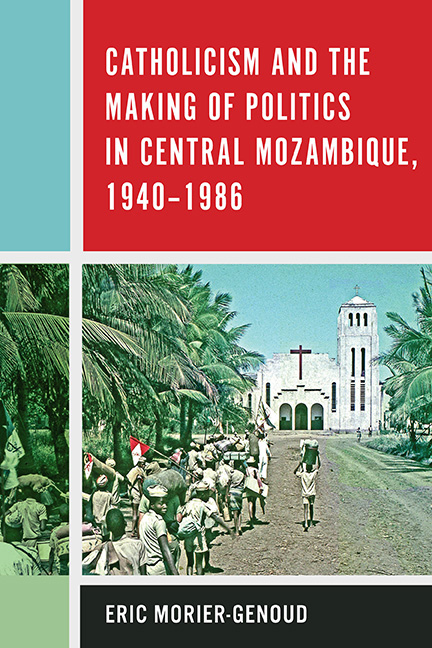Book contents
- Frontmatter
- Dedication
- Contents
- List of Illustrations
- Acknowledgments
- Note on Translations
- List of Abbreviations
- Introduction
- 1 The Making of the Diocese of Beira
- 2 Diversity and Dynamics of the Imperial Church
- 3 The Formation of an African Church
- 4 Gathering Storm: Vatican II Meets African Nationalism
- 5 Decolonization? War, Implosion, and the Vatican
- 6 Independence: Revolution and Counterrevolution
- Epilogue
- Notes
- Bibliography
- Index
2 - Diversity and Dynamics of the Imperial Church
Published online by Cambridge University Press: 28 June 2019
- Frontmatter
- Dedication
- Contents
- List of Illustrations
- Acknowledgments
- Note on Translations
- List of Abbreviations
- Introduction
- 1 The Making of the Diocese of Beira
- 2 Diversity and Dynamics of the Imperial Church
- 3 The Formation of an African Church
- 4 Gathering Storm: Vatican II Meets African Nationalism
- 5 Decolonization? War, Implosion, and the Vatican
- 6 Independence: Revolution and Counterrevolution
- Epilogue
- Notes
- Bibliography
- Index
Summary
When Dom Sebastião Soares de Resende arrived in Beira in 1943, there were only four religious orders working in his diocese, alongside some secular priests. By 1960, there were fifteen congregations in the diocese (see table 2.1 for the distribution of the congregations) and by 1974 yet another three, bringing the total to eighteen missionary organizations by the time of independence. This increase was the result of the bishop's energetic national and international recruitment drive to attract more religious orders and missionaries to Beira. For Dom Sebastião, their enlistment was a way to strengthen the church and build Christendom in Beira, by opening up and staffing mission stations, occupying the extent of the diocese, and converting the population. Yet, while the arrival of these congregations did indeed lead to significant results—the rate of Catholics in the population increased fivefold between 1944 and 1964—the multiplication of religious congregations also fostered intra-Catholic diversity. The congregations came with their own traditions, histories, and charismas, with distinct types of personnel from a range of countries, and with various training, sent to Mozambique for disparate aims and for different lengths of time. While the diversity of the church in Beira might have been rather unique (most dioceses only had a few congregations), it is representative of the church worldwide and makes for a perfect case to study the church's internal diversity and dynamics.
To explore the dynamics and internal diversities of the church in central Mozambique—imperial in nature since there was no local clergy until the 1960s—this chapter looks at the origins of the different congregations, compares them with each other, and investigates how the bishop managed this diversity. As we saw in the introduction, in theory, things are relatively clear and regulated by canon law: the bishop rules over all clergy in his diocese while the heads of the congregations rule over the internal affairs of their congregations. In practice, however, things are more complicated as both authorities rule over the same individuals, the affairs of the diocese and those of a congregation overlap, and the distinction between them is uncertain.
- Type
- Chapter
- Information
- Publisher: Boydell & BrewerPrint publication year: 2019



